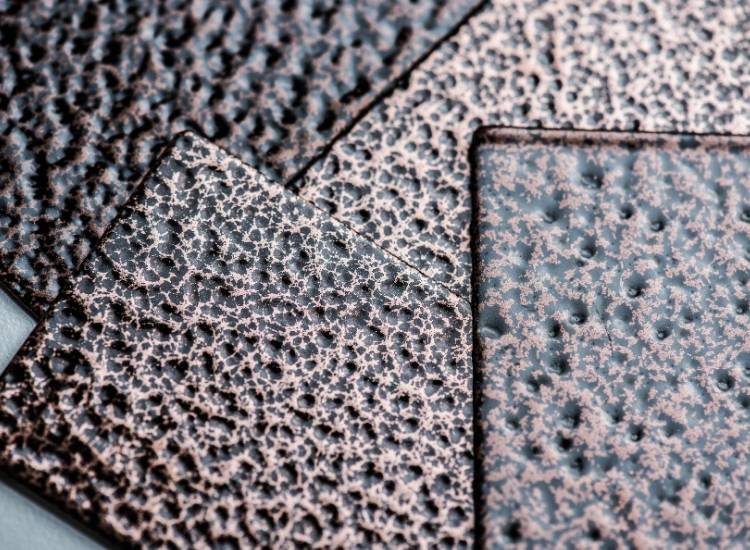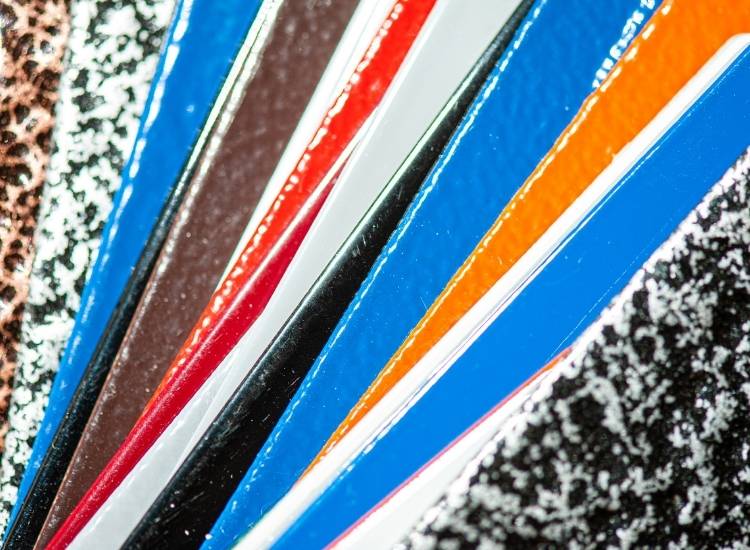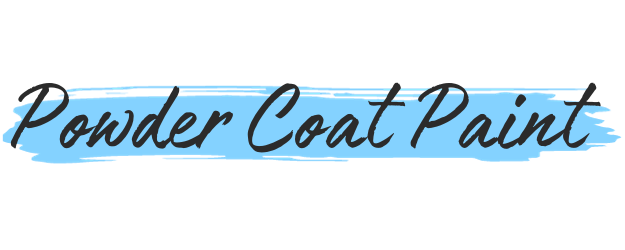What is Outgassing in Powder Coating?
Outgassing is a phenomenon you may encounter in the world of powder coating. It occurs when gas or vapor is released from a substrate during the curing process.
Understanding this issue is important to ensure a flawless finish on your coated materials. By knowing what to look out for you can take steps to minimize outgassing, leading to a more successful powder coating experience.
Understanding Outgassing
Outgassing in powder coating occurs when substances trapped within the substrate release gases during the curing process. These gases need to escape, causing imperfections in the coating’s surface.
To prevent this from happening, you should thoroughly clean and degrease your substrate during pre-treatment. Proper cleaning ensures no contaminants interfere with the coating’s adhesion and look.

Keep in mind, some materials like cast iron are more prone to outgassing. If dealing with such materials, consider using an outgassing-forgiving powder coating formula. These specialty powders offer better flow leveling and will hide imperfections caused by gas release.
Remember, it’s essential to monitor and control your curing process. Maintain consistent temperature and duration throughout curing to minimize potential outgassing issues.
Causes of Outgassing in Powder Coating
Substrate Porosity: The most common cause of outgassing is the porosity of the substrate you’re coating. If your substrate is porous (like cast metals) gases can get trapped within only to be released during the curing process. To minimize this risk, choosing a less porous substrate or pre-treating your metal can make a significant difference.
Previous Coatings: Another factor that can affect outgassing is any previous coatings on the substrate. If there’s any residue or organic materials, it can cause gas to release when subject to heat. To avoid this issue, thoroughly clean your substrate and remove any previous coatings or contaminants before applying your powder coating.
Contaminants: Your substrate may also have contaminants like moisture, grease, or oil, which can cause outgassing. Ensuring a thorough cleaning and drying process prior to powder coating can help mitigate your risk of outgassing caused by these contaminants.
Impact on Powder Coating Quality
These gases then create defects such as pinholes or bubbles, in the powder coating’s surface, which can lead to a less durable and less visually appealing finish.
To avoid outgassing, make sure your substrate is properly cleaned and prepared before powder coating. This includes removing any surface contaminants and ensuring the metal is free from moisture, oils, or other substances that may cause outgassing.
It’s also important to select the right powder formulation and curing conditions, because it can minimize the risk of outgassing. Keep in mind that some materials (such as cast iron or aluminum) are more susceptible to outgassing due to their porous nature.
For these materials, consider using a special primer or outgas-forgiving powder. This type of powder is specifically designed to create a high-quality finish despite gas release.
Preventing Outgassing Problems
To prevent outgassing problems in powder coating you should make sure to pre-treat the metal substrate. This includes removing all contaminants such as oils, dirt, and debris, to ensure a clean surface.
Additionally, it’s important to select the appropriate powder coating material for your specific application. Consider factors like the type of metal, the intended use of the coated product, and the environmental conditions it will be exposed to.
Preheating
In some cases, outgassing can be minimized by preheating the substrate before applying the powder coating. Preheating helps release gases trapped within the metal’s surface. Be cautious to avoid damage or distortion of the metal.
Curing
Using the proper curing cycle is critical for reducing outgassing. To do this, follow the recommended curing schedule provided by the powder manufacturer. Adjustments may be needed for specific substrates or environmental conditions.
Ventilation
Maintaining proper ventilation in the powder coating area is essential as well. Good air circulation helps disperse outgassing emissions, contributing to a safer working environment and reducing the chances of defects in the final coated product.
Maintenance
Lastly, regular inspection and maintenance of your powder coating equipment will help ensure consistent results. Keep spray guns clean, check hoses for leaks, and monitor air pressure levels to prevent potential outgassing problems.
The Role of Coating Material
When selecting a coating material you should always consider its outgassing properties. Some materials release volatile substances during the curing process, which can affect the final appearance and durability of the coating.
To minimize outgassing, choose a powder coating material with low volatile content. Modern formulations such as epoxy and polyester resins, are designed to minimize outgassing while providing excellent coverage and protection.

Your choice of coating material will also impact the application process. For example, thermosetting powders require heat to cure, while UV-cured coatings do not. It’s essential to understand the optimal curing process to avoid over or under-curing, which can result in excessive outgassing.
Finally, proper surface preparation is crucial in preventing outgassing-related issues. Properly clean and degrease the substrate and remove any surface contaminants before applying the powder coating. This will make sure the coating adheres well and minimizes the potential for outgassing-related defects.
Inspection and Identification
When examining your powder coating for outgassing, it’s crucial to know what you’re looking for. Outgassing can be identified by small pinholes or craters on the coated surface.
These defects often occur when trapped gasses or volatile compounds underneath the coating are released during the curing process. A clean and properly prepared substrate is essential in preventing outgassing.
Make sure you start by thoroughly cleaning and degreasing the surface to be coated. If you work with metal, it’s a good idea to use a light sandblast or a phosphate treatment to enhance surface adhesion.
Remember, if the issue persists, consider using a powder coating with better outgassing resistance. Talk to your powder supplier for recommendations, and always test new materials on a small area first.
Outgassing Related Challenges
There are several factors that could encourage outgassing. Inadequate pretreatment of the metal can cause trapped gases, so ensure that you prepare the surface well before applying the powder.
Next, consider the type of metal being used. Porous metals like castings and alloys, are more susceptible to outgassing. Also take into account the curing process.
A slow ramp-up of the oven temperature allows trapped gases to escape before the coating fully cures. It helps minimize outgassing-related issues.
Lastly, you can utilize specialty powders specifically formulated to reduce outgassing and improve the overall finish.
Preventing outgassing altogether might be impossible, but you can take steps to mitigate its effects and achieve a high-quality powder coated finish. By addressing each of these factors, you’re better equipped to overcome outgassing challenges and maintain your project’s quality.
Related: Powder Coating Tips
